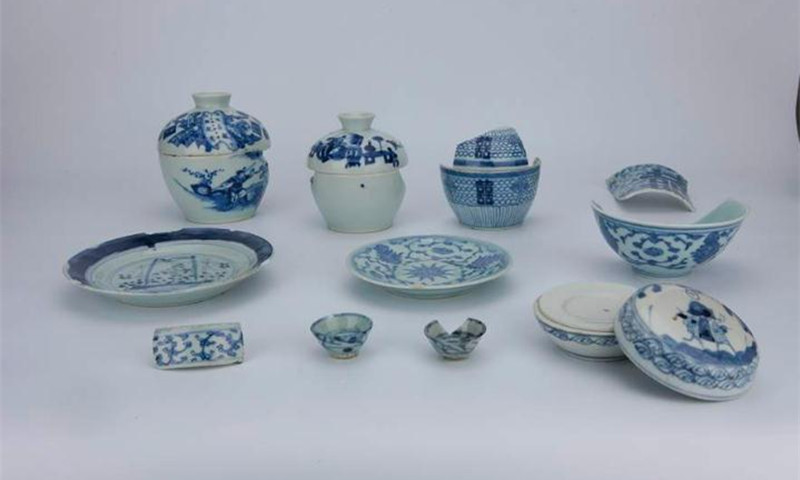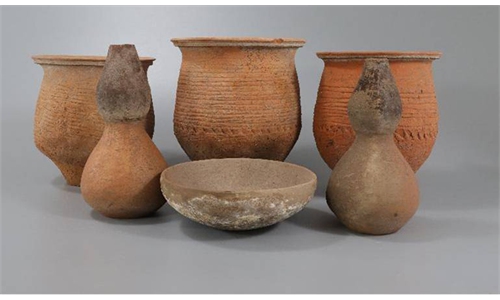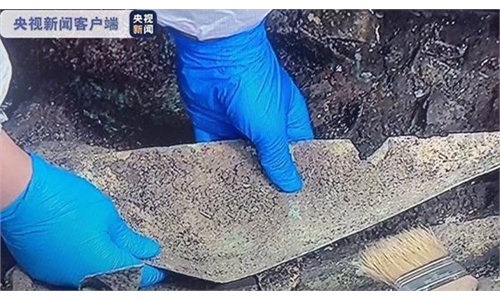Shanghai salvages Yangtze River Estuary No.2, launches world’s largest ancient wooden ship archaeological and cultural relic protection project

Some of the porcelains discovered by archaeologists in the Yangtze River Estuary No.2 in 2019. (photo: courtesy of Shanghai Municipal Administration of Cultural Heritage)
Shanghai started on Wednesday to salvage one of the world's largest and most well-preserved ancient wooden shipwrecks discovered by Chinese underwater archaeologists, the Global Times learned from the local authority.
The salvage and relocation of the shipwreck, called Yangtze River Estuary No.2, will be the globe's largest ancient ship archaeological and cultural relic protection project, stated the Shanghai Municipal Administration of Cultural Heritage on Wednesday.
"The [salvage and relocation] works are expected to be completed by the year's end," an official with the administration told the Global Times on Wednesday.
Shanghai plans to exhibit the archaeological achievements of the shipwreck by building a specific ancient ship museum afterwards, the official added.
Yangtze River Estuary No.2 is another milestone discovery of China's underwater archaeology after the Nanhai No.1 shipwreck of the Song Dynasty (960-1279) was found 35 years ago. The project will involve the world's current most advanced salvage technology.
Yangtze River Estuary No.2 was first discovered around 2015. It was suspected to be a flat-bottomed barge used for water transport in Shanghai in the Ming (1368-1644) and Qing (1644-1911) dynasties, the People's Daily reported on Wednesday.
After more than six years of underwater survey and exploration, archaeologists confirmed Yangtze River Estuary No.2 as a wooden sailing ship from the reign of the Tongzhi Emperor (1862-1874) of the Qing Dynasty. The shipwreck is about 38.5 meters long and 7.8 meters wide, with 31 cabins.
Archaeologists have found numerous antiques in and around the shipwreck, including exquisite porcelains made at China's well-known "porcelain capital" Jingdezhen in East China's Jiangxi Province, and hookah pots made in Vietnam.
Before finding the Yangtze River Estuary No.2, Shanghai had found a well-preserved iron wreck in Yangtze estuary with techniques including sonar scanning in 2015. Archaeologists named the wreck Yangtze River Estuary No.1, and later confirmed it was a sunken iron warship from the Republic of China period (1912-1949).
Shanghai government has decided to construct a museum specifically for Yangtze River Estuary No.2 in Yangpu district. The well-preserved shipwreck, carrying a large number of cultural relics, is enough to support the building of an ancient ship museum that has worldwide influence, said the People's Daily.
As the origin and an important port of the historic Maritime Silk Road and a famous international metropolis and global harbor nowadays, Shanghai has countless underwater treasures buried along its busy shipping lanes and waters in the Yangtze estuary area. The Shanghai government has collected more than 150 clues related to underwater cultural relics in the area since 2011.
Global Times



